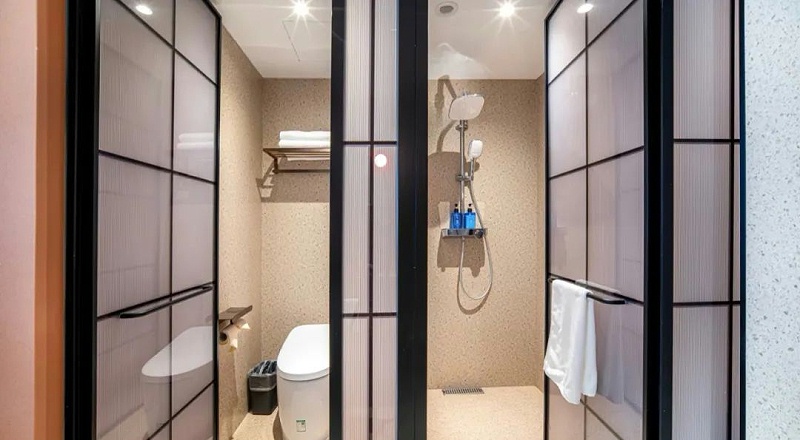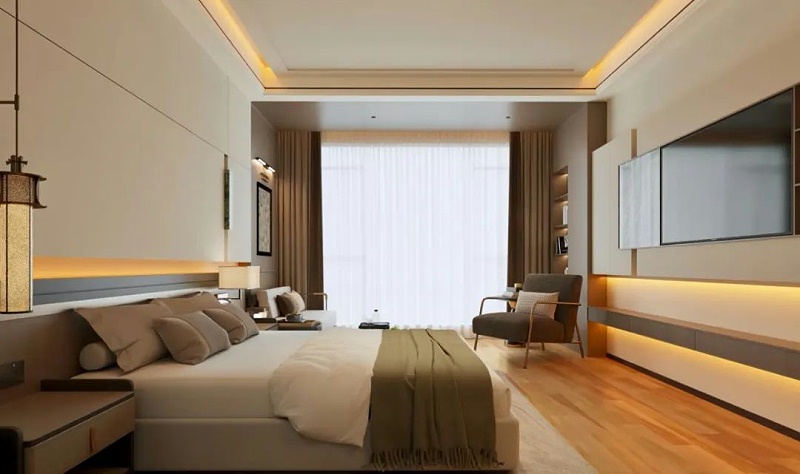The washing of linen is not merely a simple "cleaning", but rather requires the formulation of a refined plan based on the characteristics of the fabric and the type of stains to avoid wear and tear due to improper operation.
一、Washing process: Scientific operation is the foundation of quality
1.classified washing is the prerequisite
Linen of different materials and colors must be strictly separated. For instance, pure cotton bed sheets should avoid being washed together with synthetic fiber tablecloths (the lint of synthetic fiber fabric may adhere to the surface of pure cotton, affecting the texture). Dark-colored linen should be washed separately for the first time to prevent fading and contamination of light-colored linen. In addition, guest room linen (bed sheets, duvet covers) and catering linen (tablecloths, napkins) need to be washed separately. Catering linen often gets stained with oil and food debris, so stronger stain removers should be used during washing. If washed together with guest room linen, it may cause chemical residues or secondary pollution.
2.Parameter control is the key
The washing temperature, duration and detergent dosage need to be precisely controlled. Pure cotton grass is heat-resistant (60-80℃ is suitable) and can effectively kill bacteria. The temperature of the blended linen containing polyester components should
be controlled below 50℃ to prevent the fibers from hardening. When it comes to detergents, overly alkaline laundry powder can damage the toughness of cotton fibers. It is recommended to use neutral laundry liquid and adjust the amount according to
the degree of stain - excessive use not only makes it difficult to rinse thoroughly but also leaves an unpleasant smell on the linen and may even cause guests' skin to become sensitive.
3.Stain removal should be done with caution
For stubborn stains such as blood stains and oil stains, pre-treatment should be carried out before washing. Blood stains should be soaked in cold water (hot water will cause proteins to coagulate, aggravating the adhesion of stains), and used in combination with protease stain removers. For oil stains, apply a special degreaser and let it stand for 5 to 10 minutes before washing. It should be noted that bleach is only suitable for white linen, and the concentration and soaking time must be strictly controlled; otherwise, it will cause the fabric fibers to become brittle, resulting in damage or yellowing.
二、Storage management: Environmental control to prevent loss
1.Drying and moisture-proofing are the core
Linen must be thoroughly dried before storage, with a moisture content of less than 8% (which can be tested by hand feel: no damp or sticky sensation after folding). The storage environment should be kept well-ventilated and dry, with a relative humidity controlled at 50% to 60%. Avoid stacking against walls (as the walls may seep water and cause mold). Desiccant can be placed under the storage rack and checked regularly for moisture. Once mold spots are found on the linen, it should be washed immediately. In severe cases, it should be scrapped directly to prevent the spread of mold.
2.Store by category to avoid damage
When folding linen, avoid excessive squeezing, especially for high-end linen with embroidery or jacquard patterns. If the folded area is subjected to force for a long time, it may cause the patterns to deform or the fibers to break. It is recommended to store items in layers according to usage frequency: frequently used bed sheets and pillowcases should be placed in the easily accessible middle layer, while infrequently used spare linen should be stored on the upper layer. In addition, keep away from chemicals (such as cleaning agents and disinfectants) and sharp objects to prevent corrosion or snagging.
3.Regular inspections are carried out to prevent potential hazards
Random inspections should be conducted on the stored linen every week, with a focus on checking for signs of insect damage (such as tiny holes, fiber powder), pilling of the fabric or edge wear. Any problems found should be promptly screened and dealt with to prevent damaged linen from entering the guest rooms. If guests use linen with threads or holes, it will directly reduce their trust in the hotel's quality.
三、Daily operations: Detail management reduces costs
The meticulous control of the details during the laying and recycling of linen in guest rooms can effectively reduce unnecessary losses and lower the frequency of replacement.
1.Laying standards reduces wear and tear
When room attendants lay out bed sheets, they should avoid dragging and rubbing them (dust on the ground may wear down the surface of the fabric). When putting on the quilt cover, gently pull the four corners to prevent excessive force from causing the
seams to crack. For linen with decorative edges, it is necessary to avoid catching the corners of furniture (such as bed frames and bedside tables). Anti-collision strips can be pasted at the areas prone to catching.
2.Recycling classification clarifies responsibilities
The linen collected from guest rooms should be classified into three categories: "reusable", "requires special treatment" and "scrapped". For instance, linen stained with large areas of oil or hair dye is marked as "Special Treatment" and sent for washing separately. Linen with irreparable holes or tears should be directly marked as "scrapped" to avoid secondary washing and cost waste. At the same time, a linen usage registration system should be established to record the time of collection and circulation of each batch of linen, facilitating the statistics of its service life and the timely elimination of aged linen.
3.Emergency response ensures quality
During the guests' stay, if the linen is accidentally stained with red wine, coffee or other stains, the waiters can first gently pat the stained area with clean water (to avoid expanding the area due to friction), then spray a small amount of special stain remover spray. After the guests leave the hotel, mark it separately and send it for washing. This timely treatment can enhance the stain removal rate and reduce the scrapping of linen caused by stubborn stains.
The maintenance of hotel linens is a systematic project where "details determine success or failure". From the control of washing parameters to the management of storage environments, and then to the daily standardized operations, every link affects the quality and lifespan of the linens. Scientific maintenance not only reduces the operating costs of hotels, but also conveys the service concept of "attention to detail" to guests through clean, flat and comfortable linen, ultimately transforming into the core competitiveness of the hotel.

Towel Brand:Dream Princess Material:Pure cotton Size:customizable Process:embroidery Features:Quick drying, soft and durable

Towel Brand:Dream Princess Material:Pure cotton Size:customizable Process:embroidery Features:Quick drying, soft and durable

Towel Brand:Dream Princess Material:Pure cotton Size:customizable Process:embroidery Features:Quick drying, soft and durable